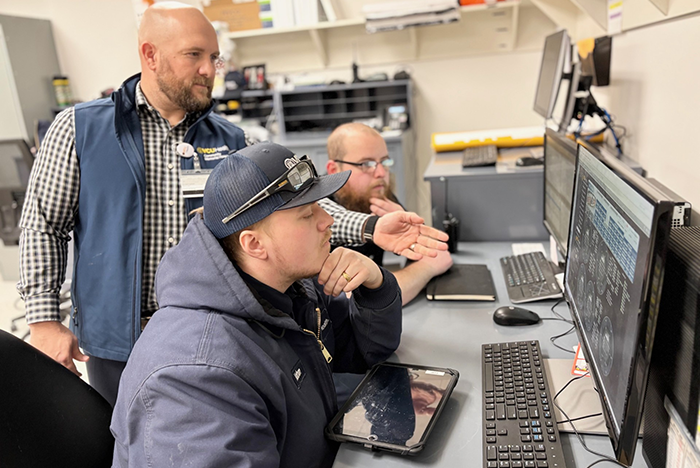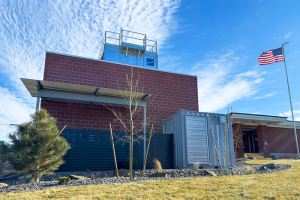Satisfaction rates improve with new proactive approach

Cody Deschenes (standing), reviews data with plant operations technicians Grant Boyce (foreground) and Nate Ellis.
Image courtesy of VCU Health Enterprise Marketing & Communications
Shifting from reactive to preventive maintenance (PM) can seem like a tall order, particularly for a small, rural hospital. Yet this shift was a necessity for Cody Deschenes when he moved into his role as facilities director for VCU Health Community Memorial Hospital in South Hill, Va., in 2024.
Deschenes knew vendor support wouldn’t be as accessible for a hospital in a town with fewer than 5,000 residents, compared to the location of his previous job in downtown Richmond, Va. To keep medical equipment running efficiently, it would be essential to have a strong PM strategy. In support of this, he led the move to update the hospital’s computerized maintenance management system (CMMS) once he assumed his new role.
“The system they had in place was more of a legacy system,” Deschenes says. “It didn’t let them schedule, track or even assign work orders. They used to print them off and hand them out.”
Backed by evidence of overdue tickets, Deschenes made a case for taking the work order system fully digital. “I even have an iPad for The Joint Commission surveyor when they come in so they can look at documentation themselves. We are an open book,” Deschenes says.
Under the new system, PM orders are assigned priority based on criticality of the equipment and the compliance need behind it. In general, it takes the facilities team 1.7 days to complete a work order. Yet PM tasks are scheduled for completion between the 1st and 15th of each month. This gives the team time to respond to unforeseen delays, make emergency repairs and get equipment back in service. Deschenes credits this scheduling approach for the department’s 100% satisfaction rate.
Over the last year, the approach has been fine-tuned with feedback from technicians to help gauge whether PM schedules are realistic and the resources available are sufficient. He also regularly gathers feedback from clinical staff regarding equipment availability and reliability.
Deschenes adds that the other important element of effective PM is well-trained staff. “Your systems are only as good as the people who use them, so we put an emphasis on really making sure that our team members understand the CMMS and its features,” he says.




